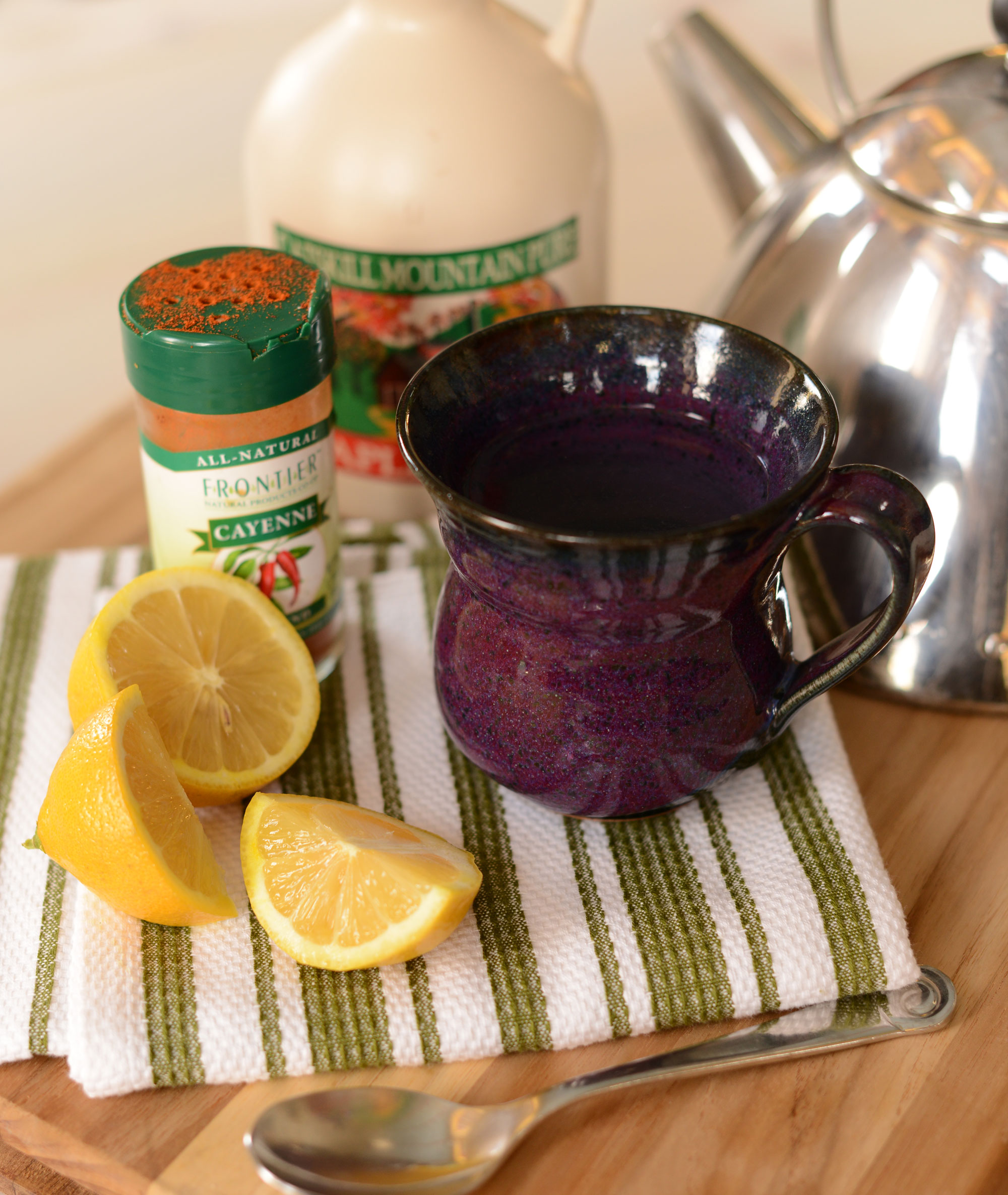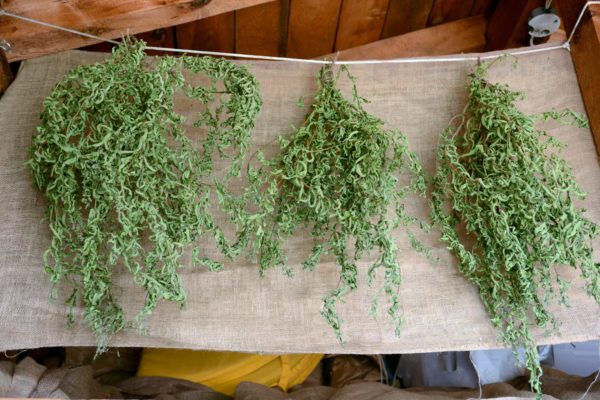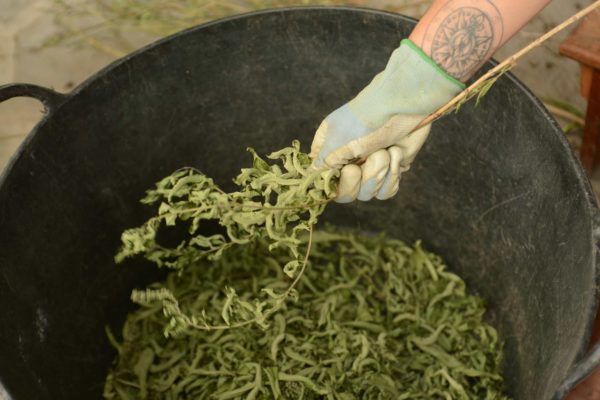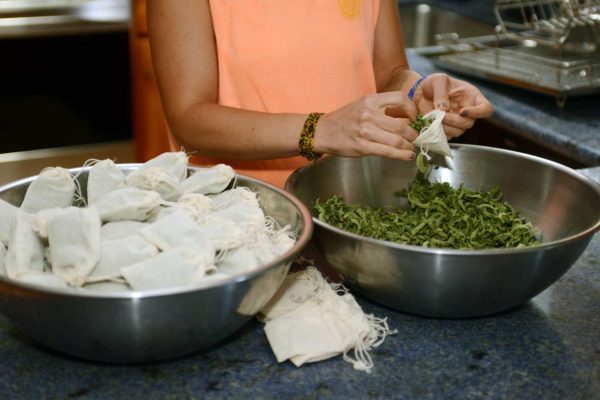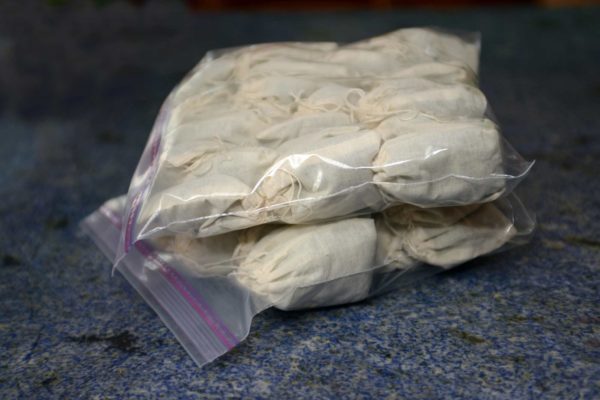Grow Lemon Verbena for Tea and Holiday Gifts
At a glance: Lemon Verbena (Aloysia triphylla)
Perennial herb (hardy in USDA Zones 9 and 10)
Culinary uses: fresh or dried, as a tea or a flavoring
Medicinal uses: treatment of digestive disorders, including indigestion, gas, colic, and both diarrhea and constipation. The tea is thought to be helpful in treating menstrual cramps, joint pain, insomnia, asthma, colds, fever, hemorrhoids, varicose veins, and yeast overgrowth (Candida albicans).
Many of us at the Spiral House have an over-the-top enthusiasm for lemon verbena. This richly-scented herb is a staple in our garden, where we relish every opportunity to brush against a branch and release its sweet, lemony perfume. During winter, we keep a few well-pruned plants alive in our sunroom. (Believe us, it would be way more if it weren’t for space considerations.)
The tea, brewed from the fresh or dried leaves, has an intoxicatingly aromatic and citrusy flavor. A few fresh chopped leaves will also perk up vegetables, salads, marinades, jams, sorbets, fruit syrups, and just about any dish or beverage — water included — where a lemon flavor is desired. Try bruising the leaves and mixing them with the sugar you plan to use in your baked goods the following day, removing the leaves before use. In summer, you can add some leaves to a large jar, place it in the sun and let Mother Nature brew you one of the most pleasurable ice teas on the planet. Half a cup of leaves to one cup of hot water is the rule of thumb for hot tea. The plant also produces sprays of delicate and edible white blossoms that make a lovely garnish.
Prior to the first hard frost, we harvest the stems, tie them in bunches, and hang them upside down to dry, then strip the dried leaves from their stems for tea. This tea has now become so popular with family and friends that it is simply impossible for us to grow enough. Each year, we find ourselves increasing our crop of these large, bushy plants that can reach heights of up to 8 feet in warmer zones. (They will grow to 5-feet by 5-feet in our Upstate New York region.) Last summer, we grew 15 plants. From this, we filled 550 organic muslin teabags, packing 10 bags per decorative tin. We kept the remaining 70 bags for ourselves, but be assured that by March, many Spiral House regulars will be shamelessly bartering with each other for whatever anyone has left.
Grown in a pot, this fragrant plant, which can go in and outdoors with the season, will remain a manageable size with some judicious pruning. Said to be deer resistant (though we haven’t proven that) and excellent for erosion control on slopes, it is capable of becoming an aromatic shrub in light shade in warm climates, where it is hardy. In colder climates, it should be treated as an annual and grown in full sun. The plant does best in loose, well-drained soil that is rich in compost. Fertilize as you would any herb: every two weeks indoors, or once a month in the garden while it is growing vigorously. We like to use Down To Earth Vegan Mix 3-2-2, which has been formulated to contain no animal products or by-products. The ingredients include: soybean meal, rock phosphate, alfalfa meal, langbeinite, humic shale ore, azomite, Acadian kelp meal and greensand. It’s a good all-around vegan fertilizer.
Prune your lemon verbena back in fall before digging and potting it to over-winter in a sunny spot. Then, let the magic begin all over again a few months later. If your plant goes dormant during winter, limit your watering to little or none at all. (Be assured that just because your lemon verbena has lost its leaves in late fall and gone to sleep — whether indoors or out — it is likely still very much alive.)
At the edge of its hardiness range, protect plants from wind with a burlap wrap or mulch. Some gardeners report success covering them with plastic bags in temperatures as low as 22 degrees F. Others allow their outdoor plants to weather a few light frosts before potting them up and bringing them inside, a process thought to prevent indoor pest infestations.
Susceptible to whitefly and spider mites, home gardeners can treat an infestation by spraying both the tops and bottoms of the leaves with an organic insecticidal soap solution of 1 teaspoon dishwashing liquid and 1 tablespoon vegetable oil in a solution of 1 quart water about 3 times at 10-day intervals, according to motherearthliving.com. Rinse about three hours after application. Misting the plants twice a week or more after treatment is believed to discourage the pests from recolonizing. Indoor plants should be isolated from other house plants during treatment.
Seductive lemon verbena definitely pays it forward: a fresh herb for flavoring, dried leaves for tea, and a fragrant houseplant during winter. The herb is now widely available commercially as tea, soaps, bath oils, and scented cream; but those of us who are spoiled by our garden-grown tea admit to being disappointed by every commercial version we’ve tried. Did we mention it’s a great base for potpourri? Please let us know what you are doing with yours.
